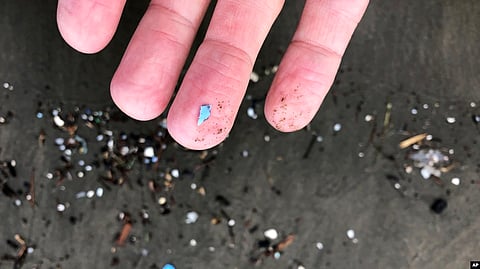
- Home
- न्यूजग्राम
- NewsGram USA
- India
- World
- Politics
- Entertainment
- Culture
- Lifestyle
- Economy
- Sports
- Sp. Coverage
- Misc.
- NewsGram Exclusive
- Jobs / Internships

A New Zealand study published on Wednesday has revealed what scientists say is the presence of microplastics in Antarctic snow. Researchers from the University of Canterbury in Christchurch, New Zealand, say that particles of plastic smaller than a grain of rice were found at 19 sites across the Ross Island region of Antarctica. The most common type of plastic, identified in freshly fallen Antarctic snow, was used to make soft drink bottles and clothing. Academics say that it is possible that the tiny particles travelled thousands of kilometers through the air, or that the presence of people in Antarctica established a microplastic ‘footprint.’ Dr. Laura Revell, an associate professor in environmental physics at the University of Canterbury, says that microplastics can be damaging to people as well as wildlife.
“We know that microplastics are harmful to humans when inhaled and to marine micro-organisms when ingested," said Revell. "They can also carry toxic substances such as heavy metals and other pollutants. So, atmospheric transport of micro plastics might mean that some pollutants can reach remote and sensitive environments that they otherwise wouldn’t be able to. Overall, this study highlights the truly global extent of microplastic pollution and we can expect to see more of the impacts of that in the future.”
Revell also warns the debris has the potential to “influence the climate” by accelerating the melting of snow and ice. Many microplastics have dark colors that can absorb sunlight, leading to “localized heating.” She hopes the research will lead to greater international efforts to curb plastic pollution.
“The Antarctic environment is typically seen as an indicator of environmental change and the discovery of airborne microplastics in such a remote region points to the need for urgent global cooperation to control plastic production and waste management," she said. The study - "First Evidence of Microplastics in Antarctic Snow" is published in the scientific journal - "The Cryosphere".
